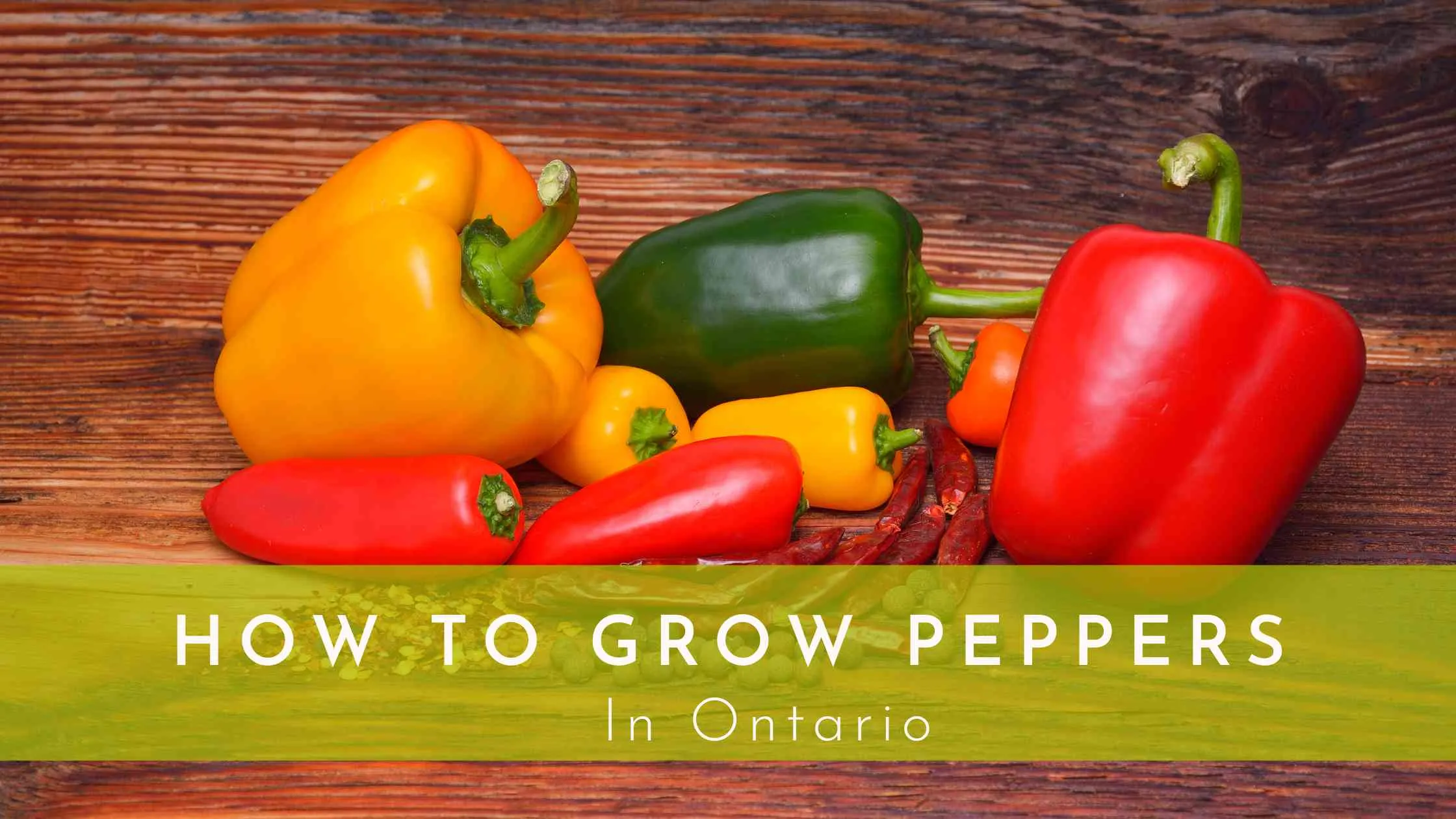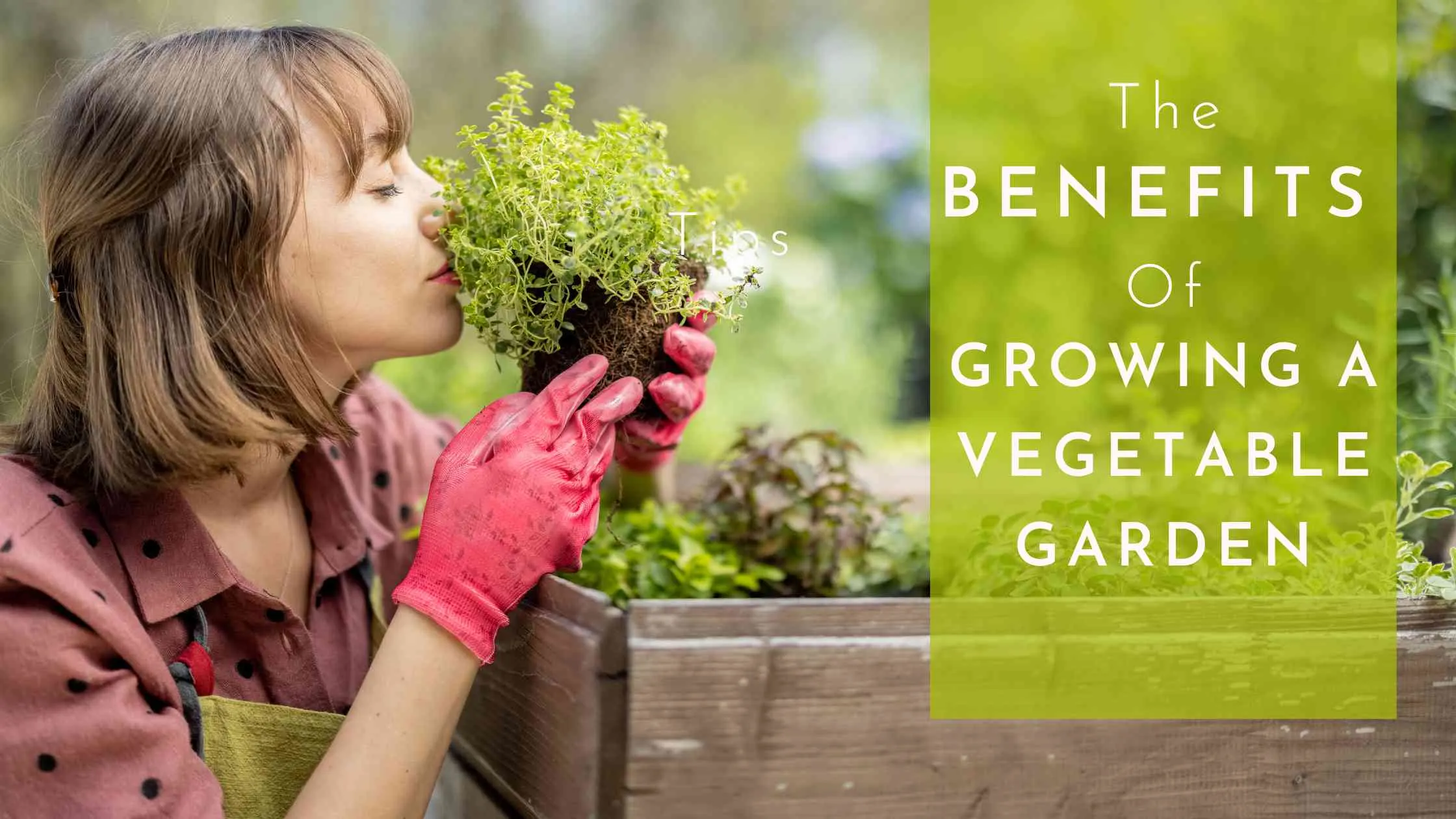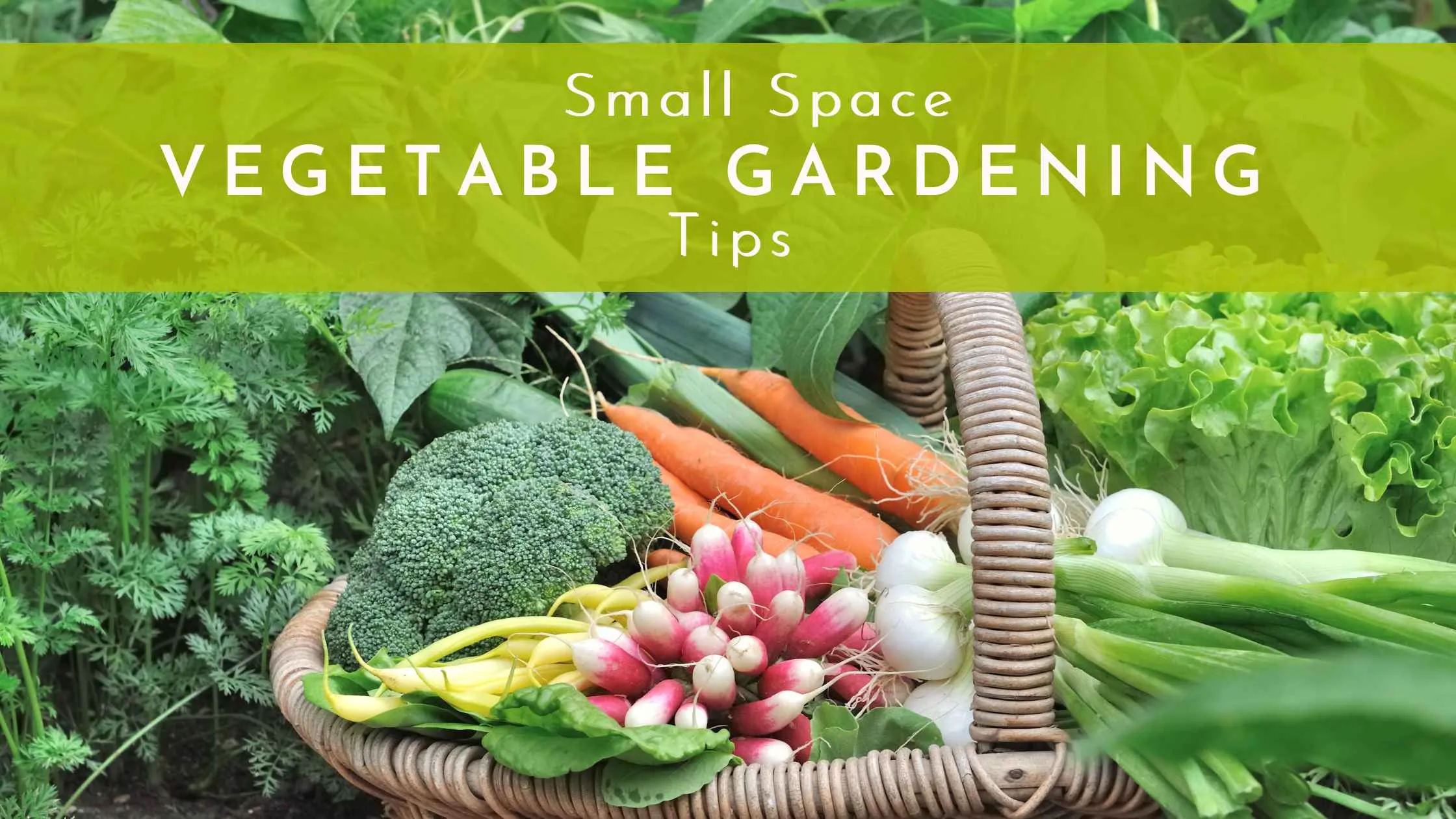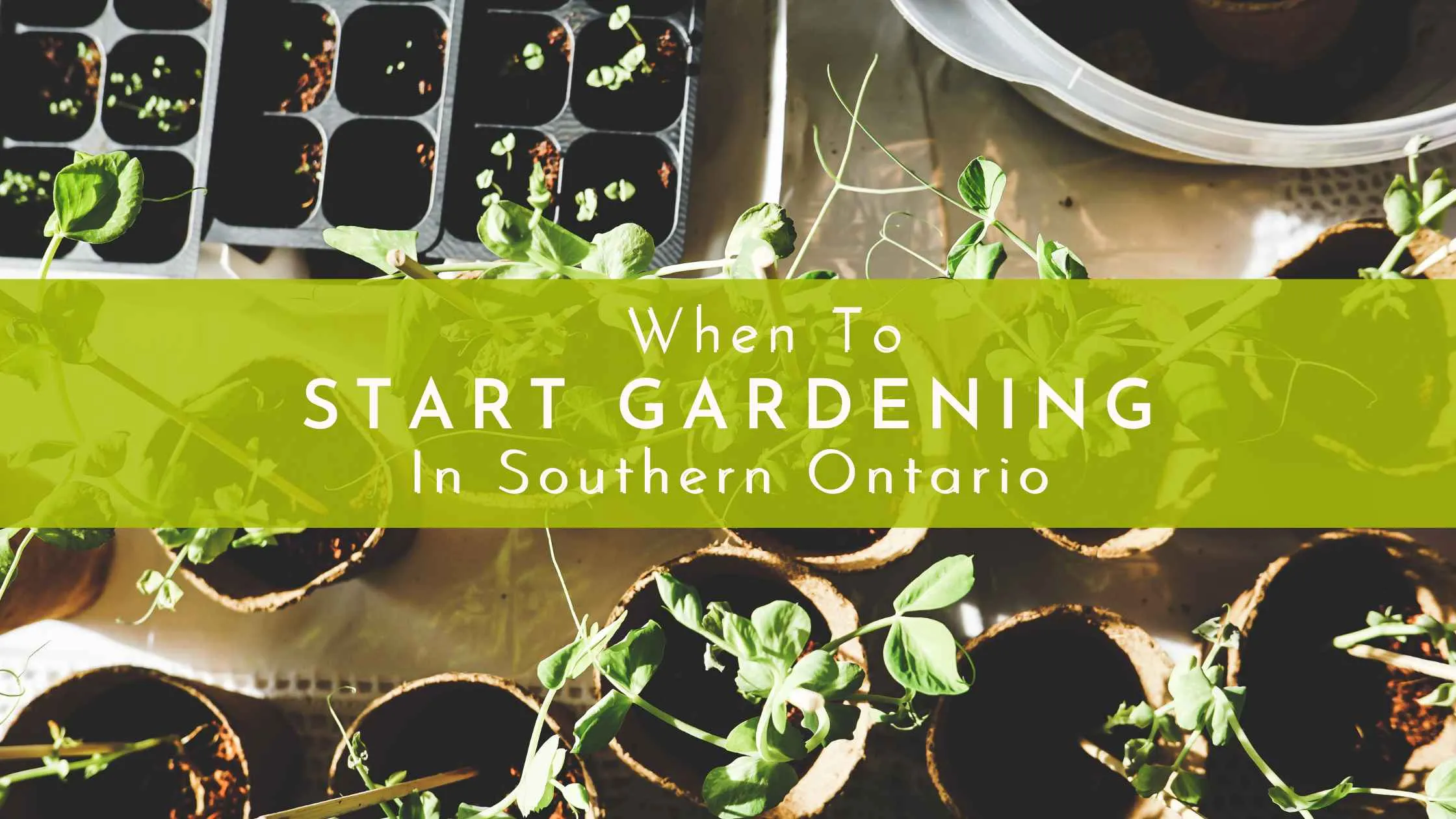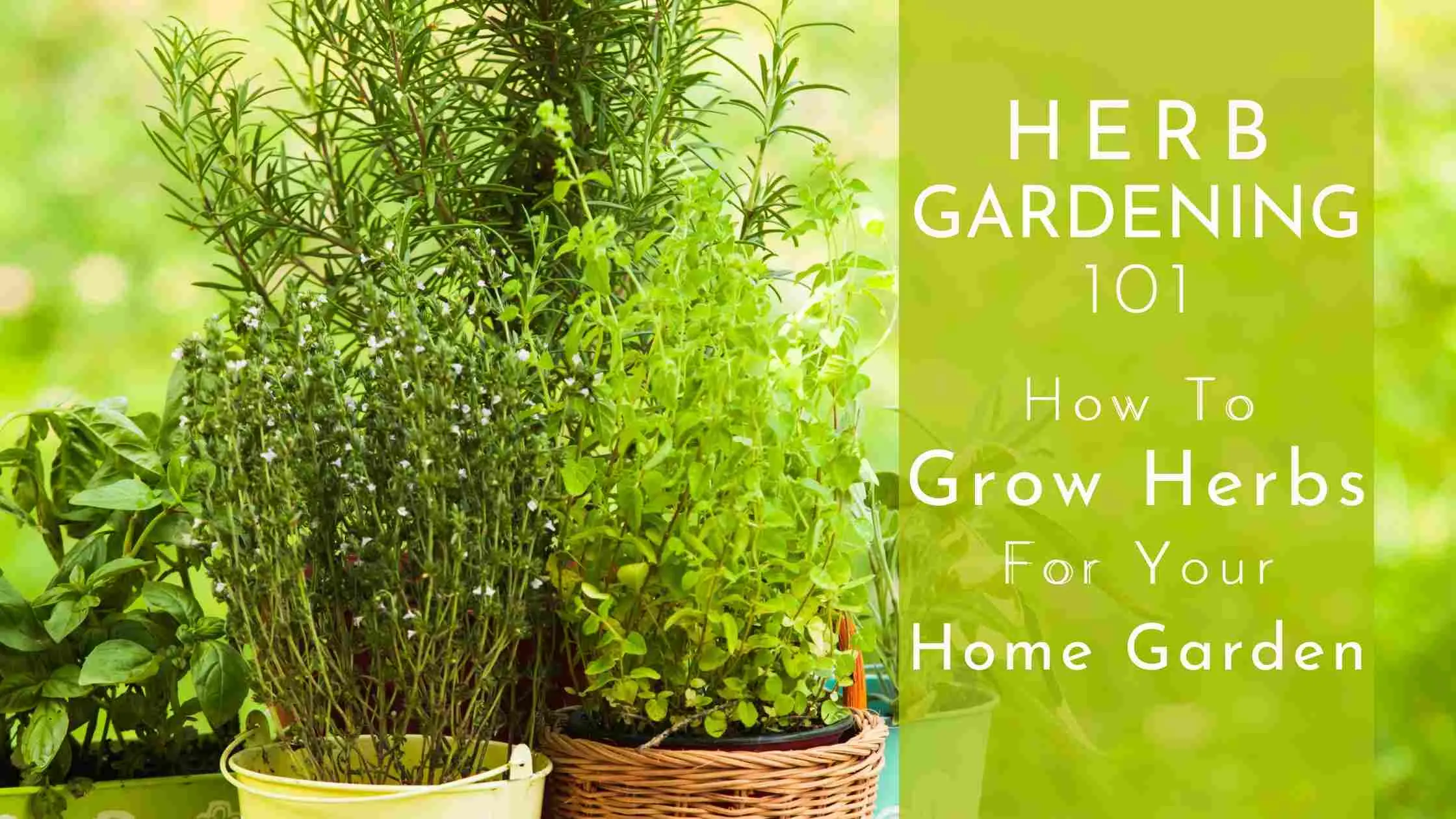How to Grow Garlic in Your Garden: A Step-by-Step Beginner's Guide
Homegrown vegetables are the best, but some people wouldn’t start a garden, because they believe it to be a tough job. Similarly, growing garlic in Canada can be challenging. But with a little patience and an easy guide, you can get flourishing garlic crops in your home garden.
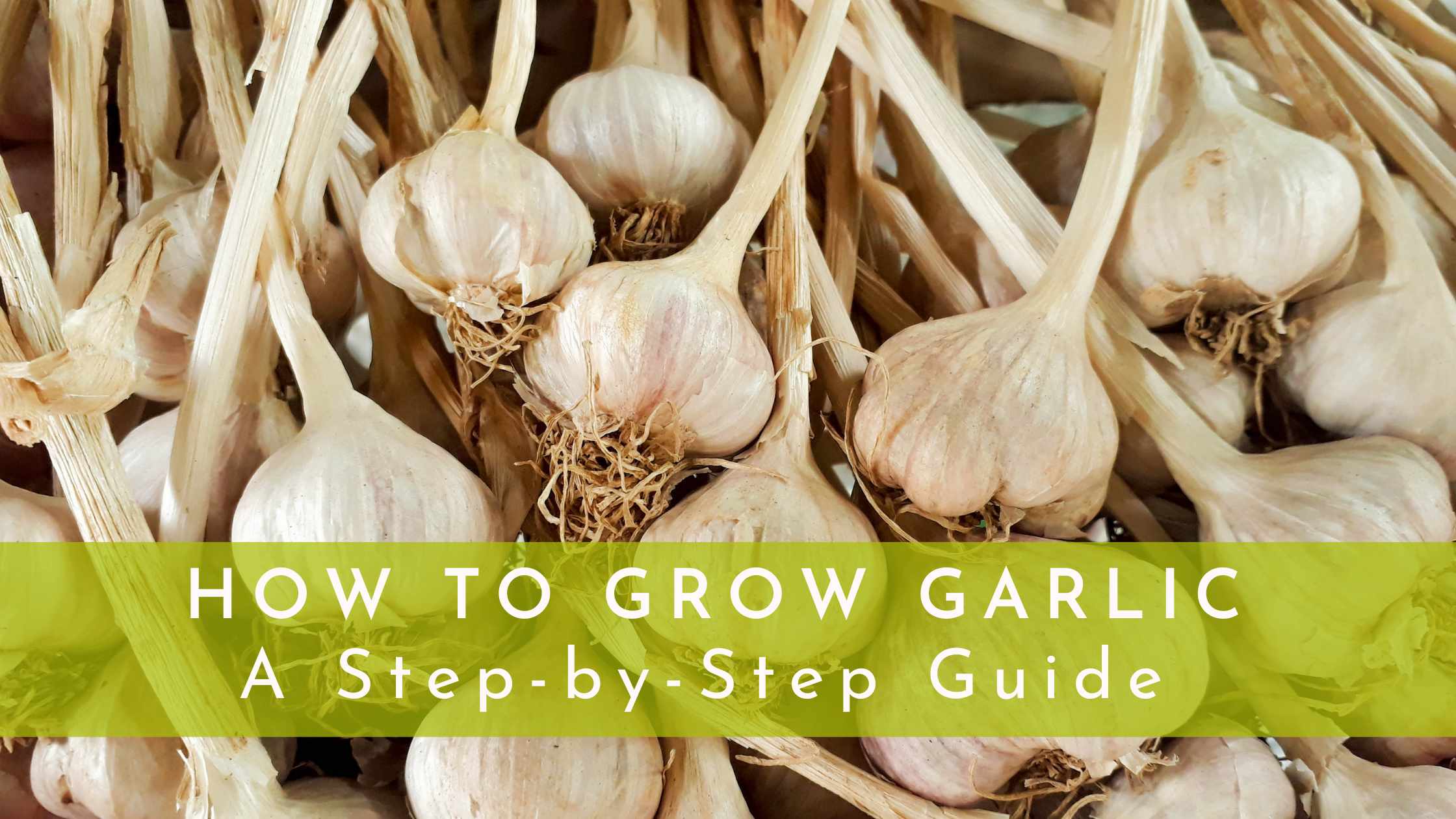
Here, is an easy-to-follow beginner’s guide to growing garlic in your home garden. From planting to harvesting, we've got you covered!
Latin name: Allium sativum
Family: amaryllis family; Amaryllidaceae
Difficulty: Easy
Season: Cool season (can be harvested in the summer)
Exposure: Full sun
Garlic Varieties
Out of the hundreds of varieties of garlic, only a few can grow in Canada. All of the garlic varieties are divided into two groups, namely, Hardneck and Softneck.
Hardneck varieties
These bolt in late spring or early summer producing a central stalk with one or two loops. The garlic leaves are called scapes and at the tip of the scape is are cloves (aerial cloves or bulbils) in a capsule, instead of a flower.
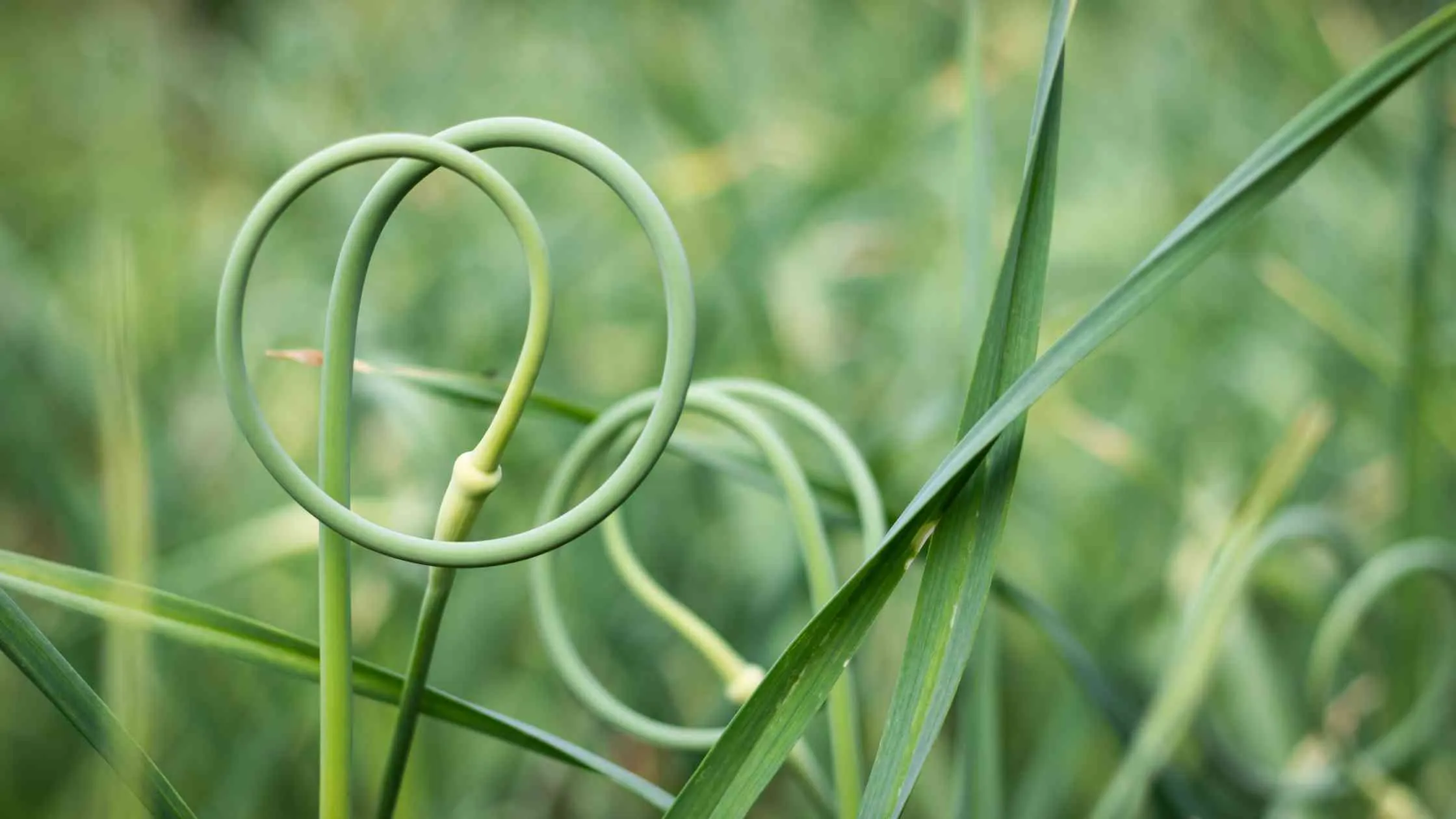
Removing these scapes help maximize the size of the bulbs. However, the turban variety of garlic grows much better if the scape is left on until the harvesting time. It will keep the bulbs bigger and better in shape.
The best hard-neck varieties of garlic that grow healthy bulbs in Canada include Marble Purple Stripe, Rocambole, Purple Stripe, and Porcelain.
Softneck varieties
These do not produce a scape but they sometimes produce the bulbils lower down the plant stem especially in colder climates.
Silverskin and Artichoke are the two soft-neck varieties that are suitable for the Canadian climate.
When To Plant Garlic?
The best time to plant garlic in Canada is in the fall, to keep the cloves exposed to the cold temperature. It can also be planted during spring, but there is a risk of single-clove garlic or much smaller bulbs. However, in some regions of Canada, spring planting is a tradition and is rather successful.
Before planting garlic, make sure the cloves are getting enough time to develop a large root system and the tops will not sprout before winter. It means the ideal garlic planting time can range from mid-September to the end of November, depending on the planting region.
In Western Canada, the winter comes early so the garlic can be planted between the 15th of September and the end of October. In southern Ontario, coastal British Columbia, and other warmer regions, it can be planted between early October and the end of November.
Planting Garlic
Garlic can be planted in single or double rows by using the following technique:
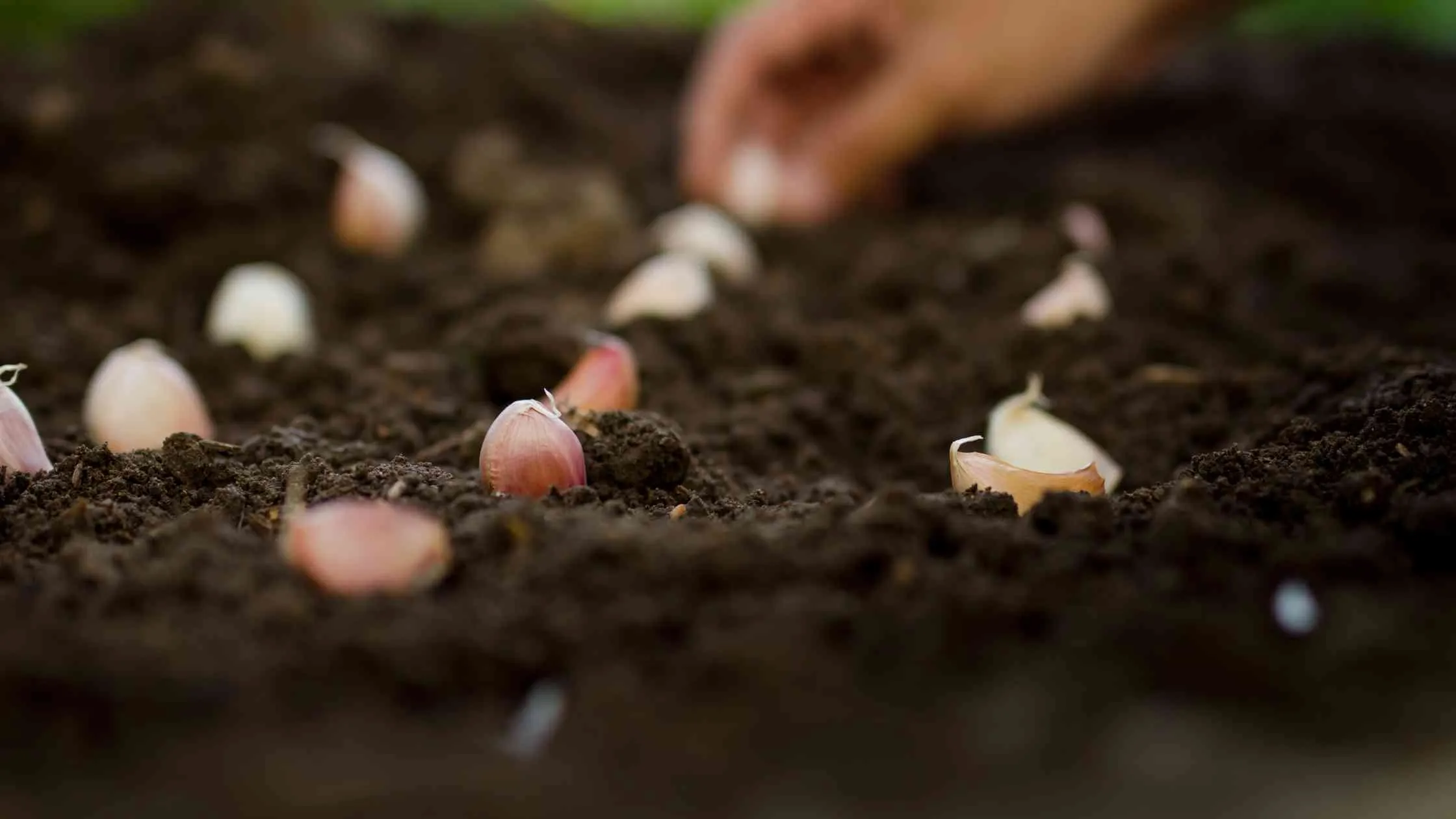
Technique
As garlic needs a lot of weeding, it should be planted in straight rows or a uniform layout. The best way to do this is using a string, a stick with markings, or a dibbler. It will help you keep track of the distance between each clove.
While planting, push the cloves in the soil, keeping the flat bottom downwards and the tip of the clove upwards. It will help the first leave to sprout from the ground straight.
Another technique to plant garlic cloves is by planting on the side. First, a furrow is dug in the planting area and the cloves are laid on the bottom and covered with soil. Most garlic plants develop normal shapes with this technique. However, some of them develop irregular shapes or sizes.
This technique is more effective with soft-neck garlic, as they turn themselves upright, helping the bulb to form normally.
Spacing
Cloves should be planted in rows with a distance of 4 to 8 inches between each clove and 6 to 12 inches between each row.
Depth
The depth of planting the garlic cloves depends on two factors.
- The type and drainage of soil
- The climate of your regions.
Garlic cloves can be planted one to two inches deep in settled soil. However, if the soil is fluffy or freshly tilted, it should be planted a little deeper than 2 inches to attain the required depth.
If you have poor draining soil, like clay, or you are planting in a region with higher rain amounts, the cloves planted more than 1 inch can rot during wet or cold climates. Similarly, planting less than 2 inches in sandy or well-drained soil can lead to drought in dry conditions.
If you are planting in a colder region, more depth can protect the cloves from winter. For further protection, you can also use mulch for shallow plants.
Growing In Containers
Growing garlic in a container is associated with the risk of sudden freezing. Therefore, make sure to use a large container with a volume of 30 gallons, or a smaller container with proper insulation. For this purpose, you can use bags of leaves, straw, or insulating blankets.
The insulated container should be placed in the garage or basement where the temperature is below ten degrees Celsius. In case, the container is on a height such as a balcony or a deck, you need to increase the layers of the insulator from both top and bottom. If it is on the ground, there will be no need for bottom insulation.
Growing In Small Spaces
For growing garlic in a small space, you must have good soil. With better soil, you should also keep the plants moist, increase soil fertility, and regularly weed. For marginal soil or a larger area, wider spacing is always the best option. It will allow all the plants to receive enough water, nutrients, and light.
Soil And Fertilizing
Garlic can be grown anywhere in Canada both in clay and sand. Loam soil is perfect for growing garlic, as it has high organic matter, moisture, and nutrient and is less prone to crusting, settling, and compaction.
Heavy clay can be difficult to work with, so you can use raised garden beds with large amounts of organic matter. Similarly, sandy soils are prone to drought and less fertility. They need regular watering and a large amount of manure or compost.
Mulching
Mulching is essential for growing garlic in Canada. It keeps the soil temperature moderate to protect the cloves from fluctuating temperatures. In summer or spring, it minimizes weed growth and retains soil moisture by blocking the sun.
Before mulching, make sure it does not contain any garlic pests, like, bulb mites, nematodes, or weed seeds. The best mulching used for garlic is oat straws, hay, or barley straw, and should be 12 to 18 inches deep.
Once there is no more threat of extreme cold, you can remove the mulching. It will help the soil to get warm and eliminate the risks of developing any disease. Furthermore, removing mulching also makes the weeding process easier and faster.
Watering Garlic
Knowing the right amount and time of watering is a crucial step because overwatering or less watering can destroy the crop.
During the growing season, the garlic plant needs fairly even soil moisture. Therefore, avoid over-watering, especially in the last few weeks to prevent poor quality garlic, poor wrappers, mold, or burst skin.
Similarly, less watering can also prevent the proper growth of bulbs. For this purpose, mulching is a good technique to maintain moisture.
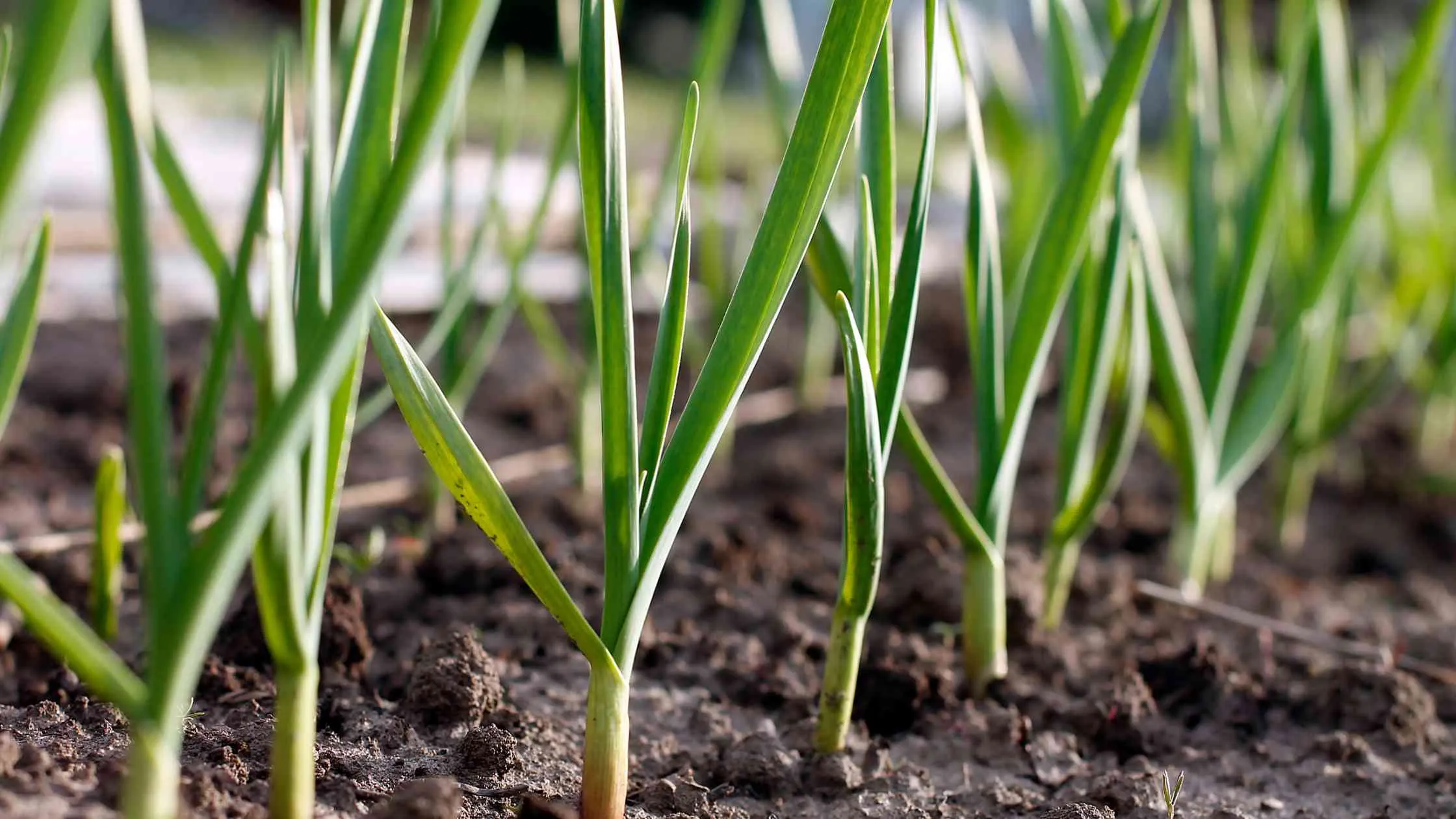
Harvesting Garlic
Every gardener has their own set of rules and timing for harvesting the garlic depending on several factors. For instance, the early hard-neck garlic can be harvested in mid to late July. While spring-planted beds are harvested in late August.
When the plant leaves are dying, it is a clear indication that the crop is ready for harvesting. Start by carefully inspecting a few bulbs. Scrap away the dirt and try to feel bumps of cloves through the wrappers. If the crop is ready, use a flat and narrow-bladed shovel to loosen the soil and then carefully take the plant out.
Some varieties of garlic can get sunburned and lose their original flavor. Therefore, take them into a curing barn as soon as they are harvested.
Managing Pests And Diseases
Garlic crops are not attractive to most mammals, but they can destroy the crops indirectly. Therefore, our main concern for protecting garlic crops is the insects, pests, and diseases.
The following are some tips to maintain and protect your garlic crops from pests and diseases:
- Use clean and disease-free garlic cloves for planting.
- Use clean and sanitized gardening equipment.
- Avoid adding allium waste to the compost.
- Regularly inspect the plants for molding and diseases, and remove any plant that is affected or not doing well. Always sanitize the shovel or other equipment used for removing the affected plant.
- Allow three to five years of gap between planting the allium plants and rotate the crops often.
- Avoid walking in your garden and garlic fields with boots during wet conditions, as they can transfer pests from one place to the other.

